Category: SS Lesson – Doctrine and Covenants
-
Literary DCGD #41: Lines on the Death of Lorenzo D. Barnes
The idea that every member is a missionary depends on a certain kind of commitment to the Church. For the Church to make the kind of progress outlined in D&C Gospel Doctrine Lesson 41 missionaries, even member missionaries, must be willing to make the sacrifices necessary. Recently, the level of commitment that some missionaries end…
-
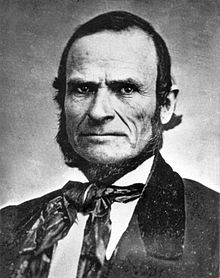
Literary DCGD #40: Baptism for the Dead
Temple and Family History work (discussed in Gospel Doctrine lesson #40) are perhaps the most unique of LDS doctrines. The doctrine behind them solves both the problem of making salvation universally available and the need for high-church ceremony in a religion that focuses on low-church ideals in its regular worship. The origin of this doctrine…
-
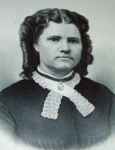
Literary DCGD #39: The Records of Our Dead
The doctrine of baptism for the dead is unique to Mormonism among religions today. Our focus on performing ordinances on behalf of those who haven’t been part of the Church in this life leads us to genealogical research to discover enough information to distinguish between individuals, and sometimes even allowing us to discover who our…
-
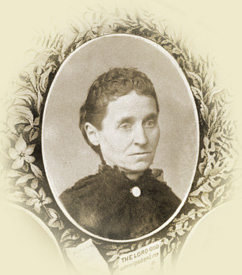
Literary DCGD #38: Song of the Sisters of the Relief Society
Often when we discuss the principles of welfare today, we talk as if the whole idea of welfare developed in the 1930s, along with the current program. In reality, before the current program caring for the needy, poor and promoting self-reliance were largely the purview of the Relief Society. And so it is a Song…
-
Literary DCGD #37: Lines suggested by reflections on Joseph Smith
In Mormonism our definition for the term Prophet is usually more specific than that employed outside of the Church. To us, a prophet is not only someone who has been inspired to prophesy, but it is also the president of the Church, the leader called to preside over the membership, the person who is to…
-
Literary DCGD #36: Past, Present, Future
The place of Utah in LDS history is occasionally a topic of lessons like Doctrine and Covenants Gospel Doctrine lesson 36. And while today not all church members live in Utah or want to live there or feel that it is a place to admire, still, it is hard to argue with the fact that…
-
Literary DCGD #35: Wakeful Winter Nights
In recent years the attention on the tragedy of the Martin and Willie handcart companies seems to have increased. Their situation and rescue has been the subject of books and movies (and lessons) in a process that seems to mythologize the events. The current lesson (#35 in the Doctrine and Covenants Gospel Doctrine manual) explores…
-
Literary DCGD #34: Farewell to my Mother
When we discuss the Mormon trek, the focus is almost always on the physical suffering that many of the immigrants endured while traveling west. While certainly the physical struggle to cross the plains (covered in Doctrine and Covenants Lesson 34) was difficult, the pioneers suffered in other ways also. For example, many left family behind,…
-
Literary DCGD #33: To President Brigham Young
We often make assumptions about the past based on our perspective today, and the current Gospel Doctrine lesson about Brigham Young and succession in the presidency is no exception. We know that the senior member of the Quorum of the Twelve becomes the new Prophet, and it is easy to assume that this was always…
-
Literary DCGD #32: Lines on the Assassination
[I’m sorry for the delay in getting this posted. I’ve been traveling a lot the past week.] The martyrdom of Joseph Smith was a shock to his people and one that, as their successors, we still remember and still feel. But in the days following his assassination, the reaction of Church members was one of…
-
Literary DCGD #31: The Lord of Hosts has Spoken
The doctrine of eternal marriage, discussed in D&C Gospel Doctrine lesson 31, is clearly tied to the priesthood (the authority by which such marriages are performed) and to salvation, for salvation in the eternal kingdom is dependent on sealing, both to parents, to spouse and to children. The following poems addresses the role of sealing…
-
Literary DCGD #30: Dedication Hymn
Our doctrine of performing ordinances on behalf of the dead is unusual among the religions of the world. Many religions pray for the dead, Mormonism actively performs the same saving ordinances that the living must have. These teachings were introduced during the Nauvoo period, and baptisms for the dead were performed in the Mississippi at…
-
Literary DCGD #29: Farewell to Nauvoo
I’ve long thought that Nauvoo was a kind of Mormon Camelot, a shining, hopeful city built on consistent, righteous principles that fell apart amid internal dissension. While I wouldn’t push the analogy too far, I think it kind of works on the surface, especially given the standard portrayal of Nauvoo in lessons like Doctrine and…
-
Literary DCGD #28: A Prayer
Despair is, I think, one of the most difficult parts of the human condition. While the sources of our despair today are very different from those suffered by the early saints, the feelings are just as real and difficult. Where do we turn for peace? The following poem explores the despair we all feel—the same…
-
Literary DCGD #27: Charity and True Patriotism
We often assume in our perception of trials and challenges that the trials aren’t our fault, that these challenges are something that happens to us instead of something that happens as a result of our choices. While it is certainly true that some trials—natural disasters for example—are not by our choice, others are at least…
-
Literary DCGD #26: To Elder W. Woodruff
Our understanding of missionary work has changed and evolved substantially over Mormon history. Where we know assume that missionaries are young, during the 19th century missionaries were more mature and married. Where the sacrifices of missionaries today are usually parts of life postponed, during the life of Joseph Smith they meant real hardship for families,…
-
Literary DCGD #25: Awake! Ye Royal Sons!
What should the priesthood mean to us? How should it influence who we are and how we act? These questions are part of nearly every Mormon lesson on the priesthood these days, and lesson 25 of the Doctrine and Covenants Gospel Doctrine manual is no exception. And I think the following poem fits this basic…
-
Literary DCGD #24: Prejudice
I frequently hear claims that many church members are leaving the Church, that those who have been raised in the Church, or who have converted have become disillusioned. For a variety of reasons members do leave the Church, and it may be that they are leaving faster now than they did 50 years ago; although…
-
Literary DCGD #23: The Transformation
I occasionally see from both inside and outside of the Church those who suggest that Mormons are somehow against education. While there certainly have been some anti-intellectual ideas floating around the Church almost from the beginning, the general tenor of Church teachings have always been supportive of education, and D&C Gospel Doctrine lesson #23 is…
-
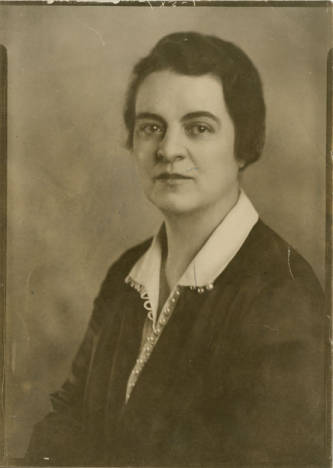
Literary DCGD #22: Because We’re Mormons
The word of wisdom is strongly connected with who we are as Mormons—it has become as much an identifier as pork is for Jews and for Muslims. We emphasize the importance of this teaching in lessons like the current Gospel Doctrine lesson (#22), and we teach it to kids almost from birth. But while section…
-
Literary DCGD #21: Ere long the vail will rend in twain
When we think of the second coming of Christ and the things that will happen in the last days, frequently our focus is on the prophesied destruction and the “signs of the times.” But as the focus of D&C Gospel Doctrine lesson 21 shows, we need not put our focus there, but instead we can…
-
Literary DCGD #20: From The Arcana of the Infinite
It seems like a few verses in the D&C are all we know about the life after this. Lesson 20 of the Gospel Doctrine manual covers D&C 76, 131, 137, and part of 132, and in these scriptures we discover a structure for the hereafter, a segregation of the children of God into groups based…
-
Literary DCGD #19: Spirit Memories
How thin is the veil? Might we remember bits of our experience there? Could a melody we heard there be familiar to us here? (assuming we even heard melodies there). The idea of the pre-existence and of the other elements of the plan of salvation, discussed in D&C Gospel Doctrine lesson 19, are a source…
-
Literary DCGD #18: The Temple of God
We are a temple-building people. Today we are more removed from the process than ever. Where Mormons once donated money, materials, time and effort to building temples in Kirtland, Nauvoo, St. George, Salt Lake and elsewhere, we participate less and less in the process, first no longer providing materials, then over time less and less…
-
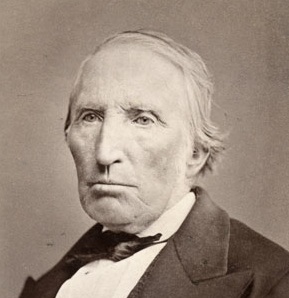
Literary DCGD #17: A Satire on Avarice
Its hard to find poetry about tithing! I suppose since tithing wasn’t emphasized as much by the Church before the beginning of the 20th century, Mormon poets didn’t focus on the concept. Or, it might simply be that the subject matter doesn’t work well in poetry; certainly the word “tithing” isn’t very poetic, leaving me…
-
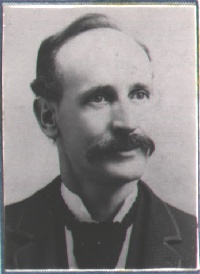
Literary DCGD #16: Sabbath School Opening Hymn
When we discuss the Sabbath in lessons, we can either focus on the things that we should not do to keep the day holy or we can focus on the things we can and should do. The 16th Gospel Doctrine lesson for the Doctrine and Covenants focuses more on the latter than on the former,…
-
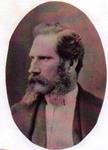
Literary DCGD #15: A Prayer
I had a hard time finding a poem that fits with this week’s Gospel Doctrine lesson on spiritual gifts. There just aren’t many that even mention spiritual gifts, and most that do seem to be predominantly about another subject. But I was finally able to find one that focuses on the gift of healing, one…
-
Literary DCGD #14: The Female Relief Society of Nauvoo
What does it mean to consecrate? What are the kinds of things we must do, the attitudes and priorities we must have when we consecrate all that we have and that we are to the Lord? Doctrine and Covenants Gospel Doctrine lesson 14 explores the Law of Consecration, focusing on these attitudes and priorities and…
-
Literary DCGD #13: Inspired Writings
Lesson 13 of this year’s Gospel Doctrine manual reviews some of the most important contributions of Joseph Smith—the scriptures he brought forth. Through Joseph Smith we have not only the Book of Mormon, but also the Doctrine and Covenants, Pearl of Great Price and the inspired version of the Bible. In addition, Joseph Smith provided…
-
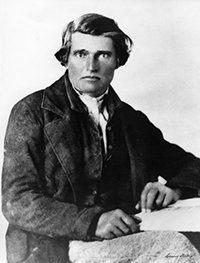
Literary DCGD #12: The Gathering of Zion
One of the most modified Mormon doctrines is the doctrine of the gathering—the idea that Church members should move to a central gathering spot to build up Zion in this dispensation. D&C lesson 12 teaches about this doctrine, the subject of many of the sections in the Doctrine and Covenants. Under this doctrine, Mormons have…
